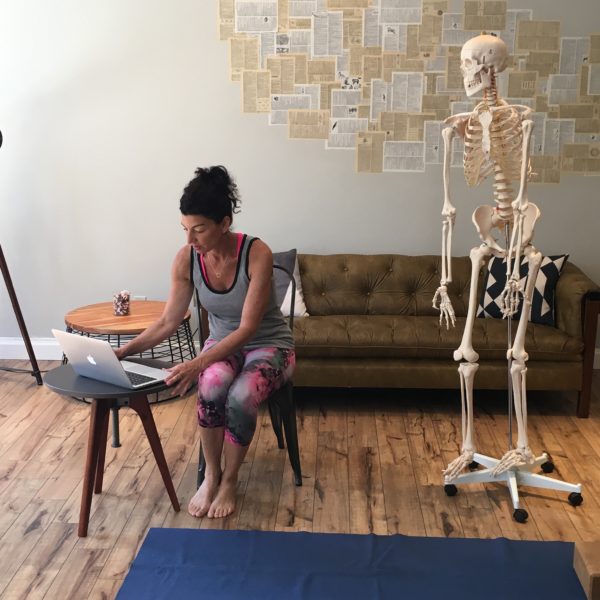
Everyone is big on results these days. Whether its a “before and after” picture on Instagram, a weight loss program, a fitness program or a program teaching you the stock market, people love to both get and give results. We’re programmed to look for results especially when there’s effort involved in learning something.
However, often in the yoga industry, learning doesn’t always translate to results. The practice of teaching yoga to new teachers and then those teachers sharing that knowledge with their own students is filled with lots of pitfalls as well as different ways the same content is presented. Also, the information is often interpreted through the eyes of the teacher and then further interpreted through the lens of the newer teacher as its passed on to the students.
However, when it comes to anatomy, it’s a bit easier to get results. In the case of anatomy and learning anatomy as it pertains to teaching yoga, we’re dealing with facts. Learning the bones, the joints, the muscles and the muscles as they work in poses is factual information that really does not change or should not change regardless of who is teaching the content. What tends to get a little tricky is when we then apply anatomy to practice. In doing this, there can be differences between teachers and how they apply this factual knowledge to the practice.
The other challenge is not every teacher covers the same content. As a result, the RESULTS teachers get are different. This may or may not be a bad thing but I can say from my experience teaching anatomy, the resounding feedback is that most teachers feel they lack a good understanding of anatomy.
I set out to find out more about this and surveyed my mailing list about their pain points on anatomy. If you missed participating, you can complete the quick 10 question survey here.Â
Some of what I heard from teachers confirmed what I thought would be their pain points:Â
- Wanting to learn how to help students modify poses
- Wanted to learn how to work with injured students
- An interest in learning anatomy so there is a high level of confidence in one’s knowledge and the information flows freely from the teacher
- How to teach in a way that prevents injuries
There’s certainly more but those are some of the highlights. What the survey said to me is that there is a real need for anatomy knowledge out there and that excites me because presenting anatomy to teachers is my passion….. AND, presenting it in an understandably way is my style.
So, to that end, I want to share with you the results that I predict you’ll get (if you apply yourself diligently, take the course timely and possibly even use me as a resource for any questions you have) if you take my most comprehensive course yet on anatomy, called YOUR YOGA ANATOMY BLUEPRINT. I built it with results in mind because I want it to be worth your time and money. So here, right from the course is what you should be able to do once done:
- Describe how the structure and function of the body works in the context of a movement practice like yoga- specifically, things like bones, muscles, fascia, joints, ligaments and tendons
- Build effective yoga class sequences that focus on different anatomical themes
- Answer students’ questions about anatomy with greater knowledge and confidence
- Use an informed process when it comes to selecting postures for students given what is generally anatomically accessible as well as your assessment of the skill level of the students in class
- Select specific cues to share to help students create effective and safe actions in each posture
- Provide translations for students as to the applicability of what they do on the mat to how it can be useful off the mat to improving their health
- Offer intelligent suggestions and modifications (within your professional boundaries as a yoga teacher) for students who are experiencing certain sensations and physical feedback during yoga practice
You can see that the survey questions are covered in the outcomes above. That’s why I wanted to share this with you. I want you to see that there’s a direct correlation between this online course and results that many of you are looking to achieve.
A great way to begin is to start with my online classes. These 45 minute sequences are like mini-workshops and give you a chance to practice and learn anatomy at the same time. You can get the classes here.Â
For the course, called YOUR YOGA ANATOMY BLUEPRINT, you can click the online courses page here and then pick this specific course. You can watch a free preview as well!
Yesterday, I recorded a Facebook live video and I covered all of this on video. You can catch that here.Â
Learning the complex subject of anatomy doesn’t have to be overwhelming if you focus on the key pieces of this broad subject. Take a look at the course and see how I’ve broken it down. Once you purchase the course, I’ll give you an hour of free review either after you’re done or along the way.
As always, leave comments below. Thanks for reading!
